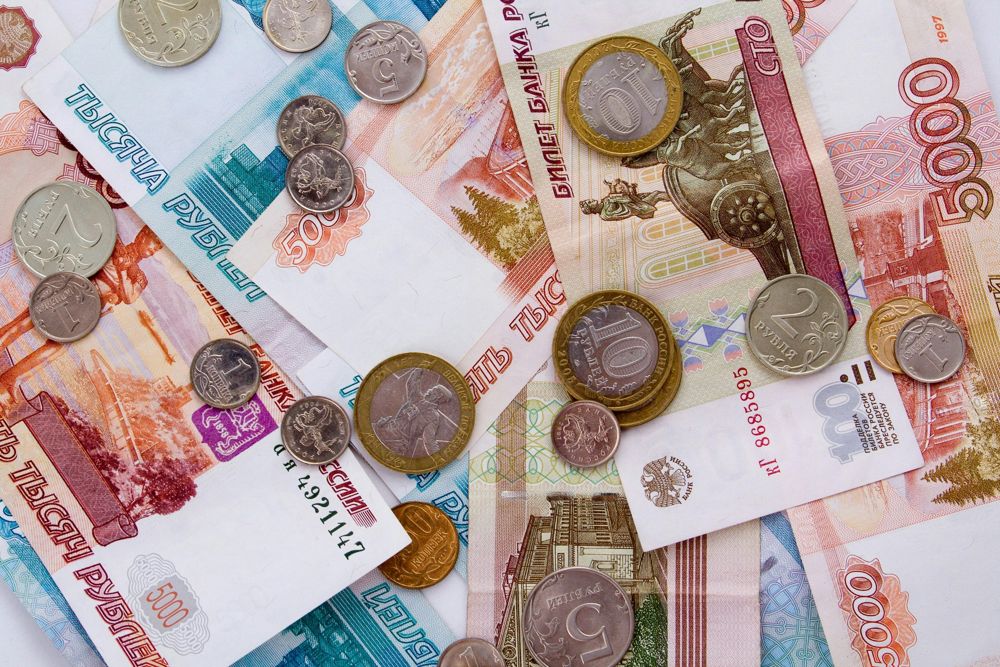Investors on Standby: Russia's Services Remain Stable, Composite PMI Rises—What’s Next?
In April, the Russian services sector continued its moderate growth: the S&P Global Russia Services PMI remained at 50.1, virtually unchanged from March. The composite PMI, which combines data from the services and manufacturing sectors, rose to 49.8 (up from 49.1 previously). Overall, these economic indicators suggest stagnation in the Russian economy and only slight progress in the business cycle. Given the persistent high inflation (approximately 10% annually) and the tightening of the Central Bank of Russia's policy (key rate at 21%), the PMI data closely aligned with market expectations.
Key Takeaways:
-
The services PMI index remained in the growth zone (50.1), indicating moderate activity in the services sector.
-
The manufacturing PMI increased to about 49.3, signaling a gradual deceleration in the decline of the industrial sector.
-
The rise in the composite PMI (to 49.8) and the services indicator suggests a revival of the business cycle, though the overall picture remains cautious.
-
Considering inflation above 10% and the Central Bank of Russia's key rate (21%), the current PMI data corresponds to market expectations.
-
Stable PMI readings may support the Russian stock market and interest in risky assets; however, inflationary risks prescribe caution in investment strategies.
Services Sector
The services sector displayed only moderate expansion in April. The PMI index held steady at 50.1, indicating very weak growth in the sector. Companies reported virtually stagnant new orders due to limited demand and reduced purchasing power among consumers. The slowdown in household spending growth and a soft business cycle hinder the development of the services sector.
Industrial Sector
The industrial sector remained stagnant once more, but signs of stabilization are evident. The manufacturing PMI rose to 49.3 (up from 48.2 in March), signaling a slower decline. In April, the reduction in production and new orders decelerated amid companies' efforts to build inventory. At the same time, there has been a slight outflow of personnel—companies are not replacing departed employees due to weak demand. Market participants note moderate optimism, with many expecting a rise in demand and an expansion of product lines. Rising costs remain a risk factor; however, the strengthening ruble mitigates price pressure on imported components, slowing inflation acceleration in the sector.
Stock Market
The situation in the stock market remains cautious. The Moscow Exchange index fluctuates within a narrow range, supported by a level of approximately 2600–2700 points, reflecting mixed economic signals. On one hand, the stabilization of the services sector and hopes for industrial recovery support investor optimism. On the other hand, the continuing low domestic demand and rising inflation limit the bullish potential of the sector. Technically, the Moscow Exchange index has yet to break through a key resistance level (around 2750–2800), and oscillators do not indicate a clear trend. Consequently, market participants’ strategies are predominantly conservative: many prefer to lock in profits or hold current positions while awaiting clear macroeconomic signals.
 In the currency market, the ruble shows relative stability. The national currency is supported by the ongoing high demand for oil and the cautious stance of the Central Bank of Russia. Against the backdrop of PMI data, the ruble has experienced only minor fluctuations: moderate economic activity has slightly reduced pressure on the exchange rate. Graphically, the USD/RUB pair remains below important technical levels, reflecting limitations on speculative operations. In the near term, the ruble will be sensitive to external factors (oil prices, geopolitical issues) and internal expectations regarding the Central Bank's policies.
In the currency market, the ruble shows relative stability. The national currency is supported by the ongoing high demand for oil and the cautious stance of the Central Bank of Russia. Against the backdrop of PMI data, the ruble has experienced only minor fluctuations: moderate economic activity has slightly reduced pressure on the exchange rate. Graphically, the USD/RUB pair remains below important technical levels, reflecting limitations on speculative operations. In the near term, the ruble will be sensitive to external factors (oil prices, geopolitical issues) and internal expectations regarding the Central Bank's policies.Bond Market
The bond market has not exhibited sharp changes. In April, OFZ yields remained elevated, reflecting the Central Bank's stringent stance and inflation concerns. A slight decrease in prices was observed at the long end of the curve: 10-year bonds slightly decreased in price (yield increased) as market participants adjusted their expectations regarding future rates. On the other hand, short-term bonds remain in demand due to the transfer of high base rates and a stable cash flow of investments into government bonds.
Outlook and Strategies
Thus, the April PMI data confirm the cautious nature of the recovery in the Russian economy. Investors assess the combination of stability in the services sector and slight growth in industrial indicators as a signal of moderate optimism; however, high inflation and sanctions continue to impose restraining factors on risk positions. Conservative scenarios dominate the stock and bond markets: portfolios are balanced and awaiting clearer signals. The currency market is poised to respond to any deviations from expectations regarding the key rate and external factors. Investment strategies remain focused on capital preservation in light of increasing volatility and uncertainties in macro forecasts.




